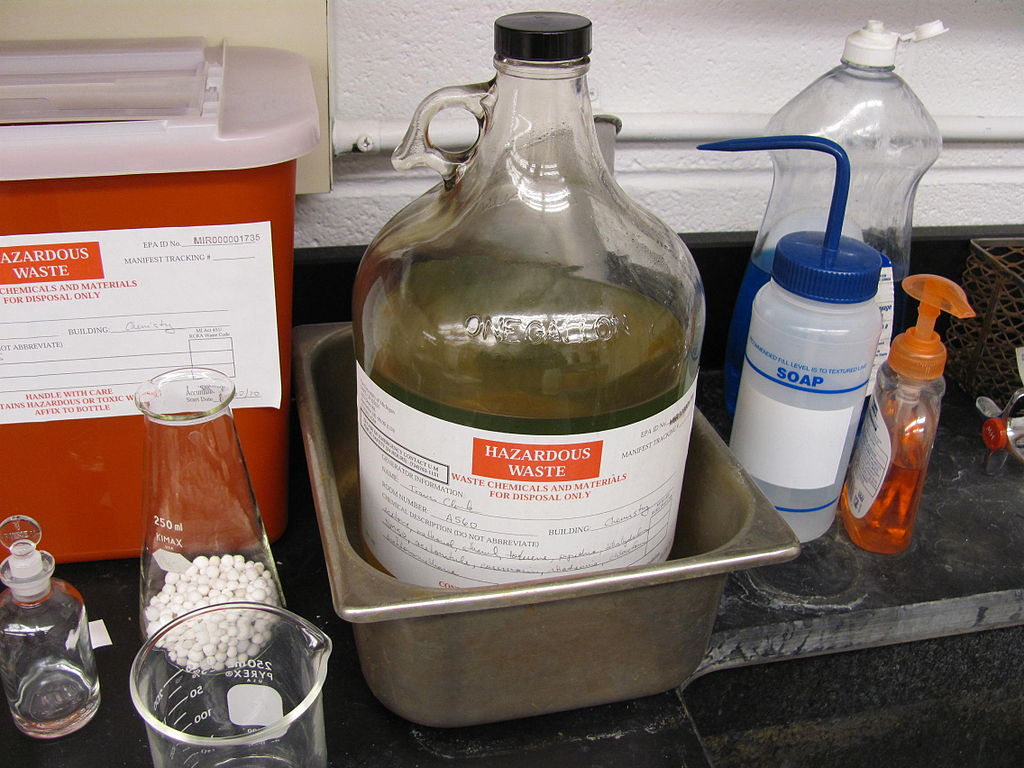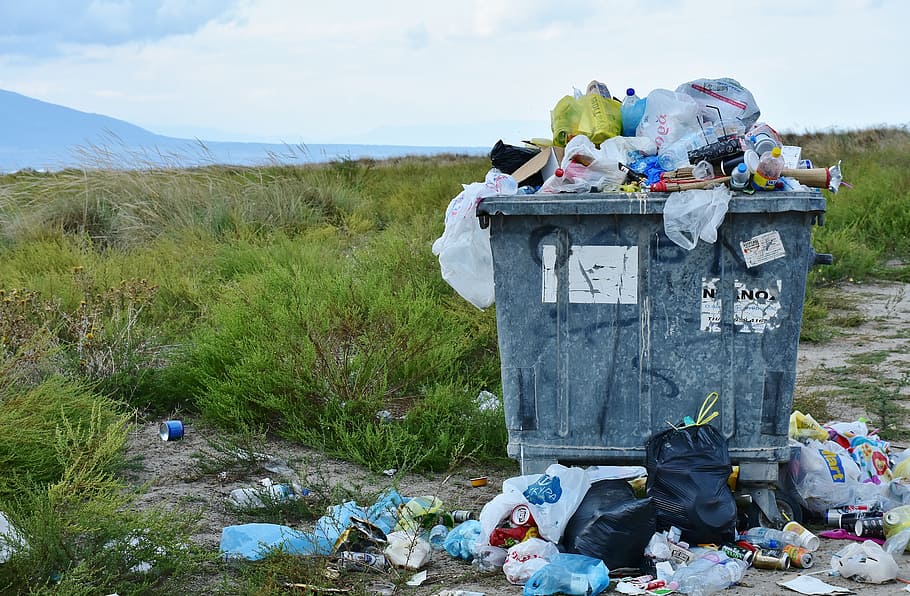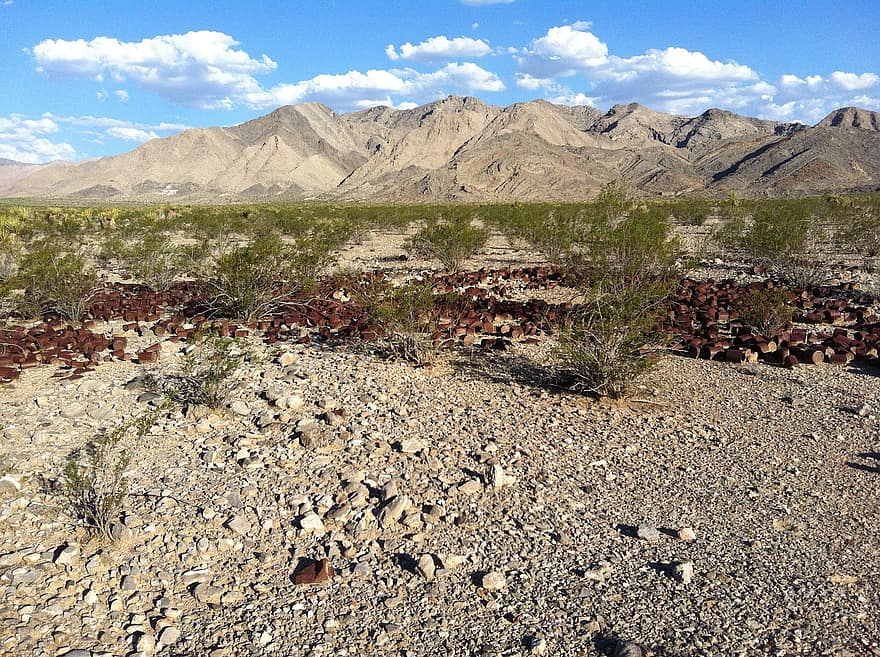The generation of hazardous waste by households, small businesses, farms, and the health care division and the construction sector has become very abundant over the years with:
- Batteries
- Electrical equipment
- Health hazard waste
- Solvent-based paints
- Varnish waste
- Dipping sheep
- Fluorescent lamps
Do you recognize items that you use in this list? If so, federal legislation requires you to dispose of them in a proper manner. If improperly stored, hazardous waste can release vapors or be dangerous in the event of a fire. When discharged into the sewage system, these items pollute wastewater.
For your convenience, you can use hazardous waste transportation services such as those provided by Recognized Trading & Shipping, Inc. We can also help with spent catalyst recycling. Our services collect and dispose of toxic streams. We do it under the provisions of the Hazardous Materials Transportation Act (HMTA). Depending on the laws of your state--and possibly even your city--you may be subject to extra requirements. Read on to learn more.
U.S. hazardous waste transportation regulations
Hazardous wastes standards and management is subject to numerous state and federal requirements. The reorganization of the disposal of these by-products is a sensible and economical measure. Especially for the small businesses that produce these wastes. To help you in this process, waste disposal companies can assist you throughout the process.
There are U.S. Environmental Protection Agency (EPA) provisions that contain a range of details and descriptions on:
- Types of waste
- Levels of waste generation
- Disposal methods
- Recycling methods

The EPA also establishes a detailed inventory of all laws and regulations. They all relate to hazardous waste from the moment it is generated until it is completely disposed of. Reading and understanding all these requirements can be a real nightmare, but they are essential for the survival of our environment.
Being in direct or indirect contact with waste can be a serious risk for employees. Violations of Occupational Safety and Health Administration (OSHA) regulations are subject to heavy fines. Every day, people get sick or lose their sense of smell from toxic waste.
What are Hazardous Wastes & Safe Disposal?
Hazardous waste is defined as waste that poses a risk to human health or the environment. A waste is considered hazardous if it has at least one of these hazardous properties:
- Explosive
- Oxidizing
- Highly flammable
- Flammable
- Irritant
- Harmful
- Toxic
- Carcinogenic
- Corrosive
- Infectious
- Toxic to reproduction
- Mutagenic
- Substances and preparations which, in contact with water, air or an acid, emit a toxic or very toxic gas
- Sensitizing
- Ecotoxic
- Substances and preparations which may, after disposal, give rise by whatever means to another substance
Most of these wastes result from manufacturing processes or the use of various catalysts. It is imperative that it be treated before it is released.
Hazardous Waste Management
The containers terminal may be a land platform or a port. It requires special means in terms of materials transportation and handling equipment:
- Crane
- Rolling gantry crane
- Trolley rider
- Reach stacker
- Lift truck
- Ramp
- Gripping frame
- Others

A particular category of solid waste is a significant threat. They include solid, liquid or gaseous materials. Most plants generate the following, among other things:
- Used solvents
- Laboratory chemicals
- Paints
- Used oil
Not all of these wastes are equally hazardous. Some are subject to more stringent requirements than others. It is therefore necessary to ensure that all of these substances are disposed of according to the required protocols.
Asbestos is a commercial term that describes six natural minerals. They are divided into two groups.
Asbestos Groups
- Serpentine
- Amphiboles
There is some confusion associated with the terminology "asbestos". The six minerals in the fibrous variety--regulated as asbestos--have equivalencies in a non-fibrous form that are not regulated as asbestos.
Main Diseases Related To Asbestos Exposure
The three main diseases related to exposure to asbestos fibres are:
- Asbestosis
- Lung cancer
- Mesothelioma
In most cases, asbestos-containing waste is sent to specially designed storage facilities. Those are subject to authorization and comply with general requirements laid down in ministerial orders. There are certain devices that make it possible to destroy asbestos fibres in order to allow the recovery of this waste if necessary.
Most hazardous wastes can be identified by the hazard pictograms on their packaging. Attention should also be paid to what is defined as inert waste.
Inert waste is any waste that:
- Is not chemically, physically or biologically modified or transformed
- Does not decompose or burn
- Does not produce any physical or chemical reactions
- Is not biodegradable
- Does not deteriorate the materials with which it comes into contact in a way that could result in environmental damage or risk to human health
Hazardous waste is thus subject to strict packaging standards. It is done so that it can be easily recognized by anyone. These items include, among others:
- Soda
- Acid
- Solvents
- Plant protection products
- Paint
- Cooking oil
- Oil change
Households often ignore these pictograms. They prefer to dispose of their hazardous products by throwing them in the trash, like any other item. Unfortunately, this is taking an ill-considered risk. One waste coming into contact with another can become lethal. These wastes are therefore subject to a ban on mixing with other products. Any direct contact with them can lead to an extra risk. But that's not all, as it can also harm the environment afterwards. It is best to be careful and find the best way to dispose of it instead.

The Hazardous Materials Transportation Act
The HMTA came into effect in 1975 through the signature of President Gerald Ford. It influences the current legislation on hazardous substances. The HMTA helps prevent pollution and illegal dumping. The purpose of HMTA is to ensure human, material and environmental safety.
There are four main provisions on which these regulations are based:
- Methods and guidelines
- Identification of materials
- Packaging conditions
- Operational standards
It is important and necessary that you respect the HMTA. It is estimated that the United States makes 500,000 shipments of hazardous waste each day. Of these shipments, about half are items considered corrosive or flammable. There are approximately 2,700 other chemicals considered in these shipments, including those that are:
- Radioactive
- Infectious
- Oxidizing
- Explosive
These materials can be the cause of accidents resulting in:
- Injuries
- Deaths
- The destruction of the planet
Under the Department of Toxic Substances (DTSC), a manifest has been established as part of a toxic waste management program. An identical manifest is required for most hazardous wastes, especially when they are transported off site. This document allows the tracking of the product through:
- Production
- Storage
- Transportation
- Treatment
- Disposal
Each actor in the shipping chain signs a copy of the manifest and keeps it throughout the procedure. An EPA identification number is required by all participants on the manifest. In California, carriers of hazardous waste must be registered with the Department of Toxic Substances Control.
But how does this apply in practice to the waste producer itself? After you have stored your waste, you have to label it according to its destination. Then, complete the hazardous waste manifest. The hazardous waste manifest indicates the nature of the waste you are disposing of according to its volume and application. A copy of this manifest must then be sent to the Hazardous Waste Management Centre (HWC). The HWMC monitors and regulates the handling of your waste. This is to ensure that it is transported and handled in compliance with the law.
The carrier in charge of collecting hazardous waste comes to collect your toxic substances. They are required to dispose of the waste within ten days in a special landfill in the region. The landfill then has thirty days to send the signed manifest to the DSTC. It must then provide proof that all your waste has been transported and treated in accordance with the regulations. If the signed manifest is not received within this time frame, then the CSTD will visit the converted carrier to verify the proper management of your waste. The worst case scenario--that the organization wishes to avoid--is that of your waste being dumped in a hole in the desert.

OSHA Hazardous Waste Operations And Emergency Response
Extremely hazardous substances are a constant threat to modern industry. Transporting hazardous waste as well as storing it is a real source of danger when you don’t follow the rules. Government departments and agencies are enforcing these health regulations. It is due to high rates of toxic waste in the United States. Among these regulatory infrastructures, we can cite the following:- Department of Transportation (DOT)
- Environmental Protection Agency (EPA)
- Consumer Product Safety Commission (CPSC)
- Occupational Safety and Health Administration (OSHA)
- Decontamination actions requested by a public authority at waste sites classified as hazardous and abandoned
- Measures to rectify errors in the clean-up of sites affected by the Resource Conservation and Recovery Act 1976 (RCRA)
- Unsolicited and volunteer clean-up at sites identified by the government as uncontrolled
- Operation of hazardous waste in treatment, storage and disposal (TSD) facilities in accordance with the RCRA Directive
- Actions in response to significant threats involving dangerous substances, irrespective of their geographical location
Every Business Should Have a Hazardous Waste Management Plan
It is absolutely necessary to have a waste disposal plan, especially when you are the head of a company. You should draw up a plan to provide information and advice to your employees about legislation and procedures for the disposal of hazardous waste.
This plan also helps to clarify the distribution of roles and priorities within the company. It provides a blueprint for action in the event of a crisis. This helps to limit the risks of contamination. This guide contains precise instructions on the handling of waste, from its creation to its disposal.

The plan should include the following phases:
- Generation of hazardous waste
The management of hazardous waste is primarily carried out by the producing establishments themselves. Each generator must check the dangerousness of its waste. It must also control the final fate of the waste. Then, they must provide complete documentation. This is done so that the hazardous waste that they produce is correctly identified, managed and treated. All of this has to be done before it is completely recycled.
- Accumulation of hazardous waste
A satellite hazardous waste storage site will be set up in each of the areas concerned. These areas will then become secure and will be marked with a sign indicating that it is a hazardous waste accumulation area. Hazardous materials are to be collected and transported to the main hazardous waste storage area only. This intermediate area is located where the hazardous waste is generated. It must be easy to monitor and visually inspect. The area in question needs both good ventilation and secondary containment if possible. This containment is intended to prevent leakage from the main container. When a waste container of this type is filled, a qualified coordinator should move it to the central storage area. The storage conditions for this container must be indicated on a form kept in the room provided for this purpose. This area is inspected regularly.
- Transportation of hazardous waste
We strongly recommend that you contact a company specializing in the treatment and disposal of unwanted hazardous waste such as Recognized Trading & Shipping, Inc. They will be happy to provide you with technical assistance and advice on how to handle your waste properly. They will also advise you on how to store the waste in order to minimize risks when the waste has to be moved and disposed of. When involving specialists, the type of waste concerned must always be precisely identified. If you have any doubt, you can ask an expert to guide you in this process, using the safety data sheets and monitoring the use of the material. This is essential due to the increasing strictness of waste disposal legislation. We must therefore ensure that waste is treated correctly and safely. It is usually possible to arrange for analysis and sampling to be organized to help improve the quality of treatment.
You can also get more info on recycling and disposing a spent catalyst that is EPA safe for the environment.
- Hazardous waste treatment
The majority of waste is easily and safely recyclable. Others will be disposed of by incineration or landfill. The benefits of recycling are many and varied. Among other things, recycling makes it possible to limit the quantities of raw materials consumed and consequently the volume of waste that has to be treated. However, a wrong choice of storage for these materials can cause these issues:
- Leaks
- Spills
- Fires
- Contamination of soil
- Contamination of drinking water
The implementation of this plan relies on the presence of at least one person with specific training from a hazardous waste coordinator during each process. These individuals will ensure that the hazardous waste management plan is respected within their department. It will be up to the Hazardous Waste Stream Coordinator to determine at what stage follow-up training may be required.
Treat it or have it removed
Each company handles the disposal of its waste and must ensure that it is disposed of under precise regulations. Waste awaiting treatment is a permanent risk for personnel and the environment. Regular treatment or removal will limit their storage volumes and duration.
All actors in the hazardous waste disposal chain must act in compliance with regulations. In particular, they must keep a register and fill in a waste tracking form. This involves:
- Producers
- Collectors
- Operators of treatment or storage facilities
In the case of waste treatment within the company itself, operations will be confined to trained and competent personnel. The designated facility will be subject to a risk assessment. This is done in order to define the prevention measures appropriate to the risks identified.
Such a transfer facility may be subject either to authorization, registration or declaration. All this is in accordance with the regulations for facilities classified for the protection of the environment. These steps will be taken with the Prefecture of the department.
Due to their specific nature, certain waste is subject to special regulations, including:
- Used oils
- Used batteries and accumulators
- Used tyres
- Waste electrical and electronic equipment
- End-of-life vehicle
- Waste containing asbestos
- Others
Get Help Now!
To assist in the treatment of hazardous waste, please consult Recognized Trading & Shipping, Inc. We are here to meet all your recycling and hazardous waste disposal needs! Fill out the form below for fast help.